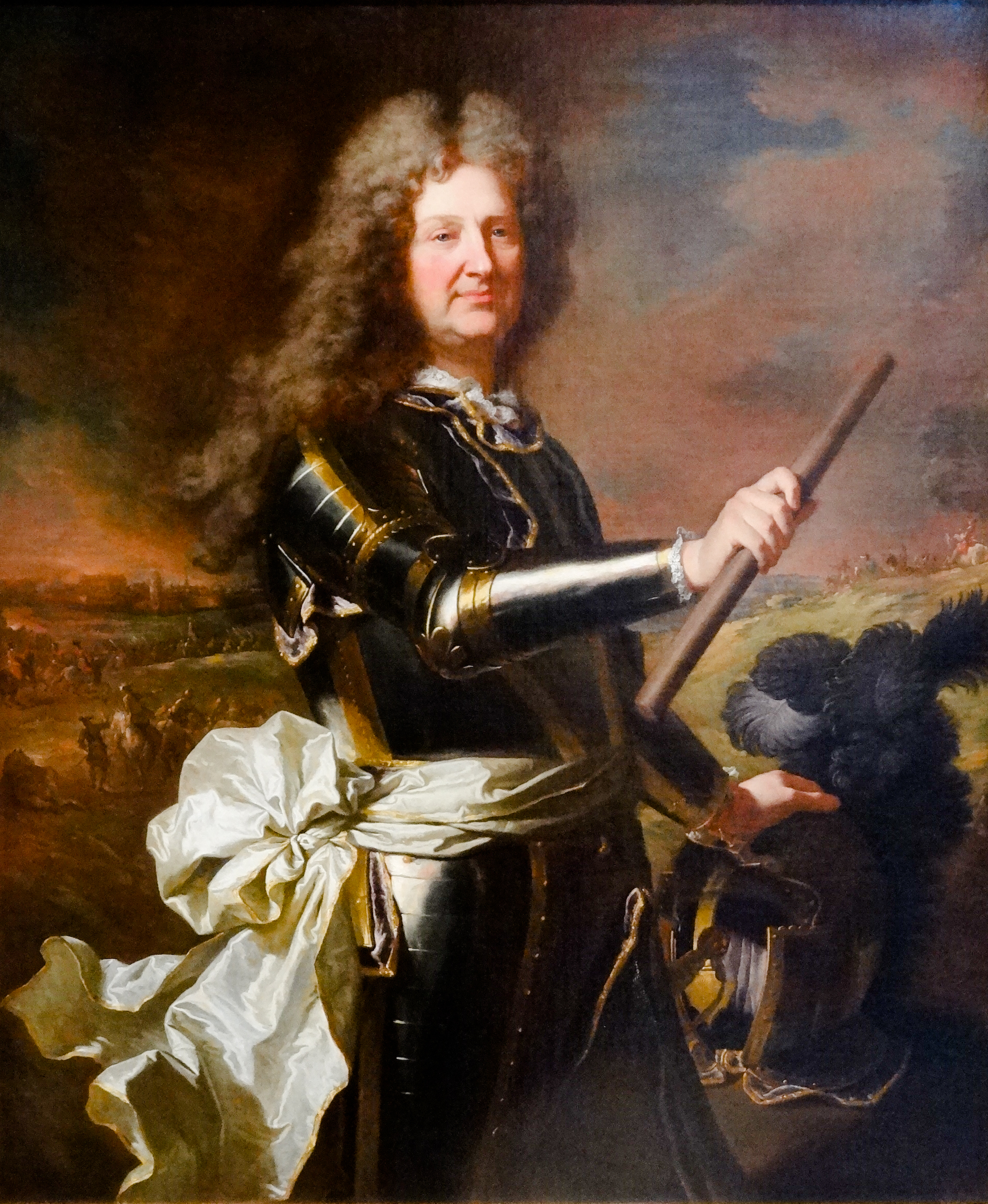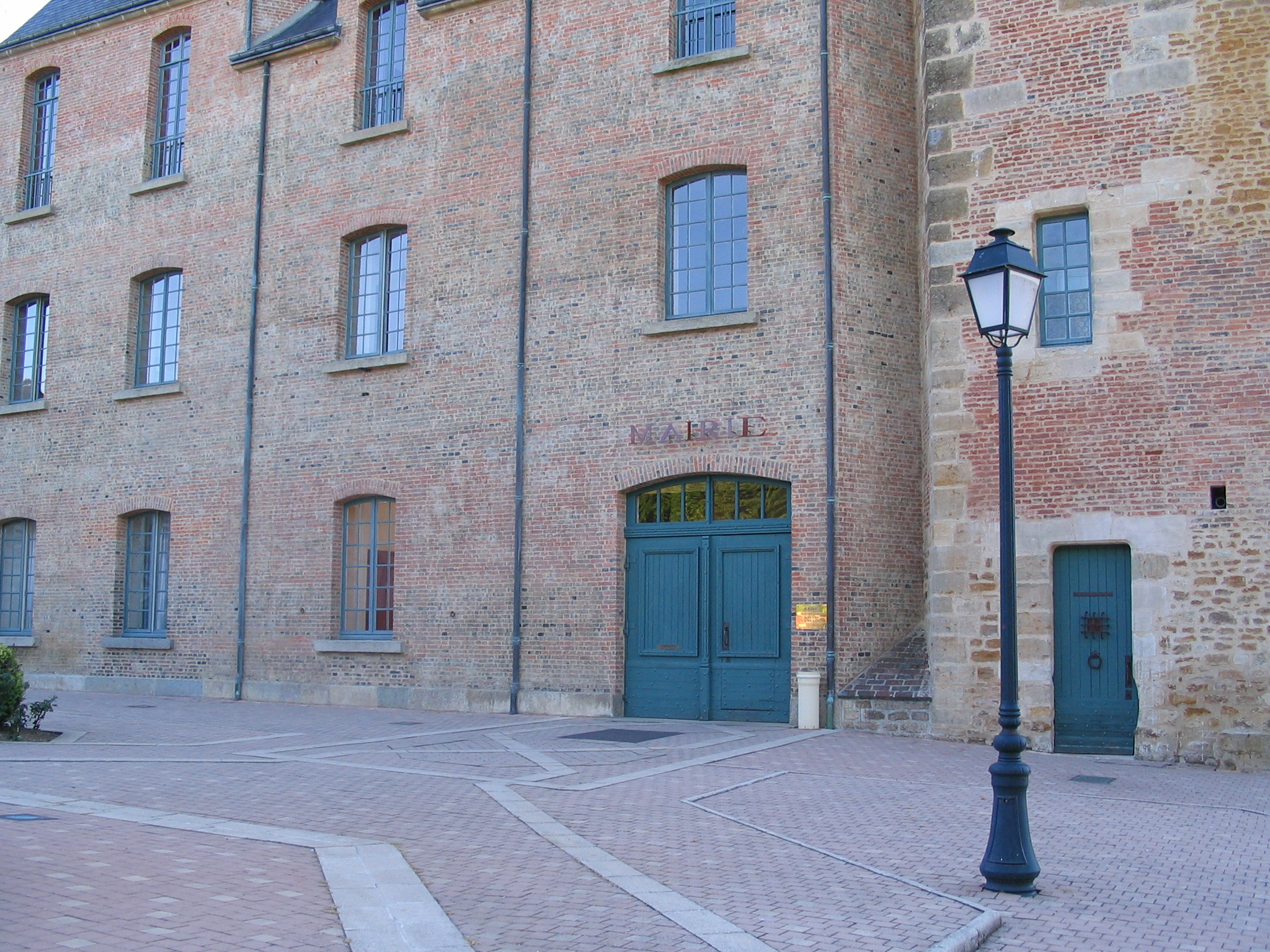|
Charles-Auguste De Goyon
Charles-Auguste de Goÿon de Matignon, comte de Gacé (1647-1729), was the French soldier, List of Ambassadors of France to the United Kingdom, diplomat and Marshal of France. The youngest son of François de Goÿon, lord of the manor, sieur of Matignon (died 1675) by his wife Anne ''née'' de Malon Château de Bercy, de Bercy, he was descended from the ancient noble Breton family Bricquebec, de Bricquebec. A career soldier, Goÿon-Matignon rose to become Aunis, Governor of Aunis (1688), Marshal of France, Marshal of the French Army (1691), before being appointed Field Marshal (1708). A portrait of him by Hyacinthe Rigaud hangs in the Musée des Beaux-Arts de Caen. See also * Count * Gacé * Jacques I, Prince of Monaco References {{DEFAULTSORT:Goyon de Matignon, Charles-Auguste 1647 births 1729 deaths French generals French noble families Counts of France 18th-century French diplomats Ambassadors of France to Great Britain ... [...More Info...] [...Related Items...] OR: [Wikipedia] [Google] [Baidu] |
Count
Count (feminine: countess) is a historical title of nobility in certain European countries, varying in relative status, generally of middling rank in the hierarchy of nobility. Pine, L. G. ''Titles: How the King Became His Majesty''. New York: Barnes & Noble, 1992. p. 73. . The etymologically related English term "county" denoted the territories associated with the countship. Definition The word ''count'' came into English from the French ''comte'', itself from Latin ''comes''—in its accusative ''comitem''—meaning “companion”, and later “companion of the emperor, delegate of the emperor”. The adjective form of the word is "comital". The British and Irish equivalent is an earl (whose wife is a "countess", for lack of an English term). In the late Roman Empire, the Latin title ''comes'' denoted the high rank of various courtiers and provincial officials, either military or administrative: before Anthemius became emperor in the West in 467, he was a military ''comes ... [...More Info...] [...Related Items...] OR: [Wikipedia] [Google] [Baidu] |
Counts Of France
Count (feminine: countess) is a historical title of nobility in certain European countries, varying in relative status, generally of middling rank in the hierarchy of nobility.L. G. Pine, Pine, L. G. ''Titles: How the King Became His Majesty''. New York: Barnes & Noble, 1992. p. 73. . The etymologically related English term "county" denoted the territories associated with the countship. Definition The word ''count'' came into English from the French language, French ''comte'', itself from Latin ''comes''—in its Accusative case, accusative ''comitem''—meaning “companion”, and later “companion of the emperor, delegate of the emperor”. The adjective form of the word is "Wikt:comital, comital". The Great Britain, British and Ireland, Irish equivalent is an earl (whose wife is a "countess", for lack of an English language, English term). In the late Roman Empire, the Latin title ''comes'' denoted the high rank of various courtiers and provincial officials, either milit ... [...More Info...] [...Related Items...] OR: [Wikipedia] [Google] [Baidu] |
French Noble Families
French (french: français(e), link=no) may refer to: * Something of, from, or related to France ** French language, which originated in France, and its various dialects and accents ** French people, a nation and ethnic group identified with France ** French cuisine, cooking traditions and practices Fortnite French places Arts and media * The French (band), a British rock band * "French" (episode), a live-action episode of ''The Super Mario Bros. Super Show!'' * ''Française'' (film), 2008 * French Stewart (born 1964), American actor Other uses * French (surname), a surname (including a list of people with the name) * French (tunic), a particular type of military jacket or tunic used in the Russian Empire and Soviet Union * French's, an American brand of mustard condiment * French catheter scale, a unit of measurement of diameter * French Defence, a chess opening * French kiss, a type of kiss involving the tongue See also * France (other) * Franch, a surname * French ... [...More Info...] [...Related Items...] OR: [Wikipedia] [Google] [Baidu] |
French Generals
French (french: français(e), link=no) may refer to: * Something of, from, or related to France ** French language, which originated in France, and its various dialects and accents ** French people, a nation and ethnic group identified with France ** French cuisine, cooking traditions and practices Fortnite French places Arts and media * The French (band), a British rock band * "French" (episode), a live-action episode of ''The Super Mario Bros. Super Show!'' * ''Française'' (film), 2008 * French Stewart (born 1964), American actor Other uses * French (surname), a surname (including a list of people with the name) * French (tunic), a particular type of military jacket or tunic used in the Russian Empire and Soviet Union * French's, an American brand of mustard condiment * French catheter scale, a unit of measurement of diameter * French Defence, a chess opening * French kiss, a type of kiss involving the tongue See also * France (other) * Franch, a surname * French ... [...More Info...] [...Related Items...] OR: [Wikipedia] [Google] [Baidu] |
1729 Deaths
Seventeen or 17 may refer to: * 17 (number), the natural number following 16 and preceding 18 * one of the years 17 BC, AD 17, 1917, 2017 Literature Magazines * ''Seventeen'' (American magazine), an American magazine * ''Seventeen'' (Japanese magazine), a Japanese magazine Novels * ''Seventeen'' (Tarkington novel), a 1916 novel by Booth Tarkington *''Seventeen'' (''Sebuntiin''), a 1961 novel by Kenzaburō Ōe * ''Seventeen'' (Serafin novel), a 2004 novel by Shan Serafin Stage and screen Film * ''Seventeen'' (1916 film), an American silent comedy film *''Number Seventeen'', a 1932 film directed by Alfred Hitchcock * ''Seventeen'' (1940 film), an American comedy film *''Eric Soya's '17''' (Danish: ''Sytten''), a 1965 Danish comedy film * ''Seventeen'' (1985 film), a documentary film * ''17 Again'' (film), a 2009 film whose working title was ''17'' * ''Seventeen'' (2019 film), a Spanish drama film Television * ''Seventeen'' (TV drama), a 1994 UK dramatic short starring Chris ... [...More Info...] [...Related Items...] OR: [Wikipedia] [Google] [Baidu] |
1647 Births
Events January–March * January 2 – Chinese bandit leader Zhang Xianzhong, who has ruled the Sichuan province since 1644, is killed at Xichong County, Xichong by a Qing archer after having been betrayed one of his officers, Liu Jinzhong. * January 7 – The Westminster Assembly begins debating the biblical proof texts, to support the new Westminster Confession of Faith, Confession of Faith. * January 16 – Citizens of Dublin declare their support for Giovanni Battista Rinuccini, Rinuccini, and refuse to support the army of the Marquis of Ormond. * January 17 – Posten Norge was founded as Postvesenet. * January 20 – A small Qing force led by Li Chengdong captures Guangzhou and kills the Zhu Yuyue, the List of emperors of the Ming dynasty, Shaowu Emperor of the Southern Ming dynasty in China. * February 5 – The Yongli Chinese era name, era is proclaimed as Zhu Youlang is declared the Yongli Emperor of the Southern Ming. * February 24 ... [...More Info...] [...Related Items...] OR: [Wikipedia] [Google] [Baidu] |
Jacques I, Prince Of Monaco
Jacques I (Jacques François Léonor Goyon de Matignon Grimaldi; 21 November 1689 – 23 April 1751) was Prince of Monaco from 1731 to 1733. He was also Duke of Valentinois from 1716 until 1733, and Count of Thorigny. Life and reign Jacques came from an ancient Normandy, Norman family. "Thorigny" is now called Torigni-sur-Vire, where the ''Mairie'' is the former family chateau. His uncle was Marshal of France, Marshal Charles-Auguste de Goyon, Charles Auguste de Goÿon de Matignon. He was a son of Jacques Goÿon de Matignon, ''jure uxoris'' Count, Comte de Thorigny, and Charlotte Goyon de Matignon, Comtesse de Thorigny ''suo jure''. When Antonio I of Monaco and his wife Marie of Lorraine, Marie de Lorraine-Armagnac were looking for a consort for their daughter and heir Louise Hippolyte, Princess of Monaco, Louise Hippolyte of Monaco, the family proposed him as a candidate. His candidacy was supported by King Louis XIV of France, who wanted to solidify French influence in Mo ... [...More Info...] [...Related Items...] OR: [Wikipedia] [Google] [Baidu] |
Gacé
Gacé () is a commune in the Orne department in Lower-Normandy, north-western France. Population Heraldry Administration Twin towns * Kinross, Perth & Kinross, Scotland See also * Communes of the Orne department The following is a list of the 385 communes of the Orne department of France. The communes cooperate in the following intercommunalities (as of 2020):Communes of Orne {{Orne-geo-stub ... [...More Info...] [...Related Items...] OR: [Wikipedia] [Google] [Baidu] |
Musée Des Beaux-Arts De Caen
The Musée des Beaux-Arts de Caen is a fine arts museum in the French city of Caen, founded at the start of the 19th century and rebuilt in 1971 within the ducal château. History Opening On September 1, 1801, the Minister of Interior Jean-Antoine Chaptal selected 15 cities to serve as depots to display a large number of paintings confiscated from émigrés or acquired through the Revolutionary and Napoleonic Wars. Although the city of Caen was chosen for its academic reputation and character as cultural capital of Normandy, it showed, at first, little enthusiasm because article 4 of the Chaptal decree specified that "the paintings will be sent only after the town has effected the expense for a gallery suitable to receive them". The paintings removed from churches and religious communities during the Revolution having already been stockpiled in the Sainte-Catherine-des-Arts church, the mayor Daigremont St. Manvieux first thought of installing the museum in the former Jesuit c ... [...More Info...] [...Related Items...] OR: [Wikipedia] [Google] [Baidu] |
Blason Charles Auguste Goyon, Comte De De Gacé
Blason is a form of poetry. The term originally comes from the heraldic term "blazon" in French heraldry, which means either the codified description of a coat of arms or the coat of arms itself. The Dutch term is Blazoen, and in either Dutch or French, the term is often used to refer to the coat of arms of a chamber of rhetoric. History The term forms the root of the modern words "emblazon", which means to celebrate or adorn with heraldic markings, and "blazoner", one who emblazons. The terms "blason", "blasonner", "blasonneur" were used in 16th-century French literature by poets who, following Clément Marot in 1536, practised a genre of poems that praised a woman by singling out different parts of her body and finding appropriate metaphors to compare them with. It is still being used with that meaning in literature and especially in poetry. One famous example of such a celebratory poem, ironically rejecting each proposed stock metaphor, is William Shakespeare's Sonnet 130: :' ... [...More Info...] [...Related Items...] OR: [Wikipedia] [Google] [Baidu] |
Hyacinthe Rigaud
Jacint Rigau-Ros i Serra (; 18 July 1659 – 29 December 1743), known in French as Hyacinthe Rigaud (), was a Catalan-French baroque painter most famous for his portraits of Louis XIV and other members of the French nobility. Biography Rigaud was born in Perpignan, then part of the Crown of Aragon, a few months before Spain ceded the city to France under the Treaty of the Pyrenees (7 November 1659). His family, the ''Rigau'', were Catalan; he was the son of a tailor, the grandson of painter-gilders from Roussillon, and the elder brother of another painter ( Gaspard). Rigaud was baptised with his Catalan name in the old Cathédrale Saint-Jean-Baptiste de Perpignan on 20 July 1659, two days after his birth at rue de la Porte-d'Assaut. His baptismal name was ''Jyacintho Rigau or Jacint Rigau i Ros'' This is sometimes transliterated as ''Híacint Francesc Honrat Mathias Pere Martyr Andreu Joan Rigau'' After the Roussillon and the Cerdanya were ceded to France the following 7 No ... [...More Info...] [...Related Items...] OR: [Wikipedia] [Google] [Baidu] |






